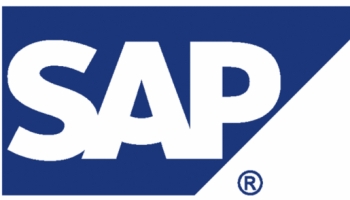German software maker SAP claims to have made savings of €170 million (£153m) over the past four years as a result of sustainability initiatives.
The savings have been made though investments in energy and carbon efficiency projects, changes in employee behaviour and the use of electricity from renewable sources, said SAP.
In the company’s quarterly sustainability update, SAP said that, although emissions for the first quarter of 2011 rose by six percent compared with the first quarter of 2010, the company is still on track to meet its year-end emissions target of 465 kilotonnes. This is in line with its long-term strategy to reduce GHG emissions to year-2000 levels by 2020.
“On one side, our sustainability solutions help our customers run better and ourselves enter into new software markets. On the other side, our own operations run more cost efficiently while we are positively impacting employee motivation,” explained Peter Graf, chief sustainability officer at SAP. “I am proud that we are able to deliver quantifiable benefits to SAP and the environment.”
Carbon accounting software
In the coming years, SAP hopes to build on these savings, leveraging its own software to measure, report and reduce its carbon footprint. The company’s latest Carbon Impact OnDemand application covers a company’s entire life cycle, offering assessment, benchmarking and forecasting of reductions.
 Carbon accounting will become important as legislation such as the CRC Energy Efficiency Scheme requires users to measure their carbon footprint. While SAP’s Carbon Impact solution was named as a leader in enterprise carbon accounting in 2010 by consultant Groom Energy, several smaller companies are hoping to corner the market with specialist software offerings.
Carbon accounting will become important as legislation such as the CRC Energy Efficiency Scheme requires users to measure their carbon footprint. While SAP’s Carbon Impact solution was named as a leader in enterprise carbon accounting in 2010 by consultant Groom Energy, several smaller companies are hoping to corner the market with specialist software offerings.
For example, Greenstone Carbon Management’s Account can now manage emissions from the supply chain and produce a carbon footprint for companies’ products, as well as handling offsets and allowances, and the UK’s CRC Energy Efficiency Scheme.
Meanwhile, ENXsuite (previously known as Carbonetworks) has added an open programming interface to its energy performance management software, which also handles building energy management.
“My initial view was that most of the market would be taken by accounting software add-on modules, given the existing investment in these solutions,” said Pete Foster of the Green IT Review blog, speaking to eWEEK Europe last year. “Whilst this may still be true, I’m increasingly convinced that there will remain a significant market for more dedicated and sophisticated solutions.”
Government green initiatives
SAP has been active in supporting the government’s attempts to implement a carbon reduction scheme, pointing out that many companies rely on spreadsheets to do their carbon accounting.
“Companies have generally never collected energy and fuel data to this level of accuracy before. Many registered companies are engaging in a huge spreadsheet manipulation task expecting that this will enable CRC reporting,” said the company’s head of sustainability, Martin McCann, back in August.
“However, spreadsheets, don’t make for easy auditing, making it likely that errors will be introduced into the CO2 equivalent conversion factors and final submission, and critically don’t enable companies to mange energy reduction – the objective of the scheme.”
However, the CRC scheme, together with many of the government’s other green IT strategies, have suffered severe setbacks as a result of the budget cuts, and are now relying on private investment.





